Xishuangbanna Tropical Botanical Garden (西双版纳热带植物园), founded in 1959 by Chinese botanist Cai Xitao, spans approximately 1125 hectares. It houses over 13,000 living plant species and is divided into 38 specialized plant areas. The garden also conserves around 250 square kilometers of pristine tropical rainforest, making it the largest botanical garden in China by area, species collection, and number of specialized zones. Globally, it holds the distinction of maintaining the highest number of outdoor plant species and the most diverse plant groups on display to the public.
The garden is divided into two main sections: the eastern and western areas. The eastern section features extensive, untouched tropical rainforest, ideal for hiking and exploring the natural landscape. In contrast, the western section comprises numerous smaller gardens, each with a specific theme, attracting the majority of visitors. These two sections are separated by a considerable distance but are connected by an electric shuttle service for convenience.
Xishuangbanna Tropical Botanical Garden is not only a significant center for plant conservation and research but also a popular destination for tourists and nature enthusiasts. Its vast collection and diverse habitats offer a unique opportunity to experience a wide variety of tropical flora in a single location, making it a vital resource for education and environmental awareness.
Table of Contents
- Basic Information
- Location and Transportation
- Highlights of Xishuangbanna Tropical Botanical Garden
- Vlog about Xishuangbanna Botanical Garden
- Other Attractions in Jinghong Suburbs
Basic Information
| Estimated Length of Tour | Half a day |
| Ticket Price | 80 RMB |
| Shuttle Bus | Western Section: 50 RMB |
| Opening Hours | 8.00 – 18.00 |
| Telephone Number | 0086-0691-8715914 |
Location and Transportation
The Xishuangbanna Tropical Botanical Garden is located within the jurisdiction of Menglun Town (勐仑镇), Mengla County (勐腊县), Xishuangbanna Dai Autonomous Prefecture, Yunnan Province, China. To reach the botanical garden, visitors can purchase bus tickets from the Banna Passenger Transport Station (No. 3 Minhang Road) to Menglun or Mengla and disembark at Menglun Town.
Highlights of Xishuangbanna Tropical Botanical Garden
Eastern Section of the Botanical Garden
Map of the Eastern Section

Green Stone Forest Scenic Area

Spanning 225 hectares in the eastern part of the garden, the Green Stone Forest Scenic Area is renowned for its lush natural beauty and high biodiversity. Over 90% of this area is forested, featuring typical limestone mountain forest vegetation. The area is home to more than 1,000 species of higher plants and hundreds of wild animal species, creating a rich and dynamic ecosystem.
The Green Stone Forest gets its name from the extraordinary landscape of intermingled stones and trees. The area is dotted with peculiar and varied limestone formations that resemble natural sculptures, creating a rare spectacle of “forest above, stone forest below.” This unique landscape offers a stunning visual experience and a rare opportunity to observe the intricate interplay between geological formations and dense tropical vegetation.
Moreover, the Green Stone Forest is a critical habitat for many endangered and rare species, including the double-horned hornbill, grey leaf monkey, stump-tailed macaque, and gibbons. This area also boasts a rich diversity of tropical orchid species, making it an essential site for the conservation and research of these vulnerable plants and animals. The scenic area serves as a demonstration base for the reintroduction and comprehensive protection of these rare species, highlighting its ecological importance.
Tropical Plant Germplasm Resource Collection Area
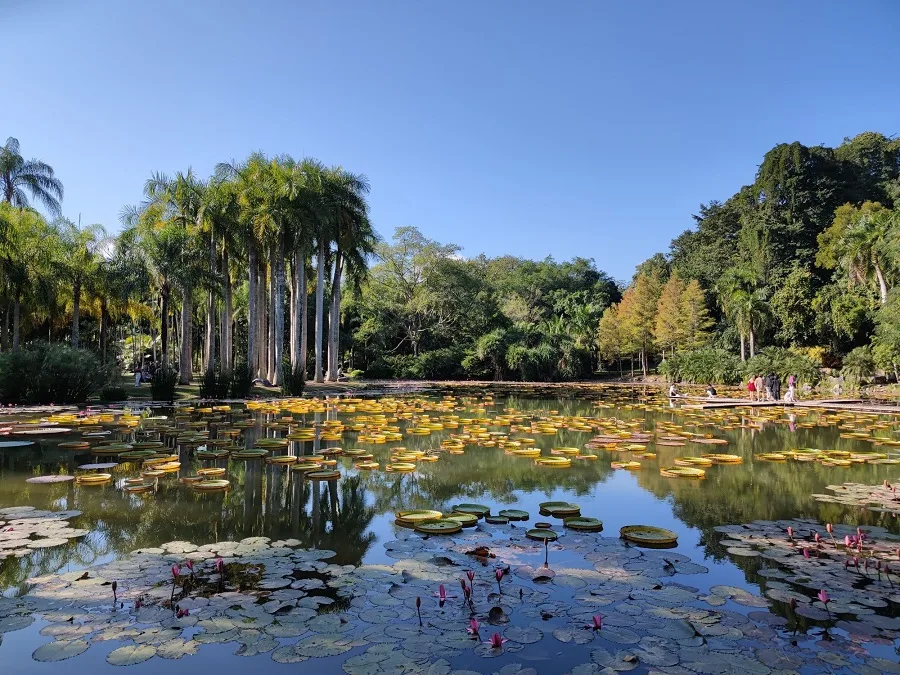
The Tropical Plant Germplasm Resource Collection Area, established in 2001, is situated within the garden’s tropical rainforest zone. Covering over 100 acres, this area is a major component of the “Ten Thousand Species Project,” a significant collaborative initiative between the institute and the province. It serves as a crucial base for the introduction, cultivation, and preservation of tropical plant germplasm resources from regions such as Guangdong, Fujian, Tibet, Hainan, Guangxi, Yunnan, and neighboring countries in South and Southeast Asia.
This specialized area has amassed approximately 1,400 species of tropical plants, including over 20 nationally rare and endangered species. It represents about 130 plant families and over 1,000 species, including indigenous flora. This makes it the most extensive and important base in China for the artificial collection, cultivation, and preservation of tropical plant species. The collection area provides an invaluable platform for scientific research and public education, facilitating studies in botany, conservation, and ecology.
Western Section of the Botanical Garden
Map of the Western Section

Ficus Grove
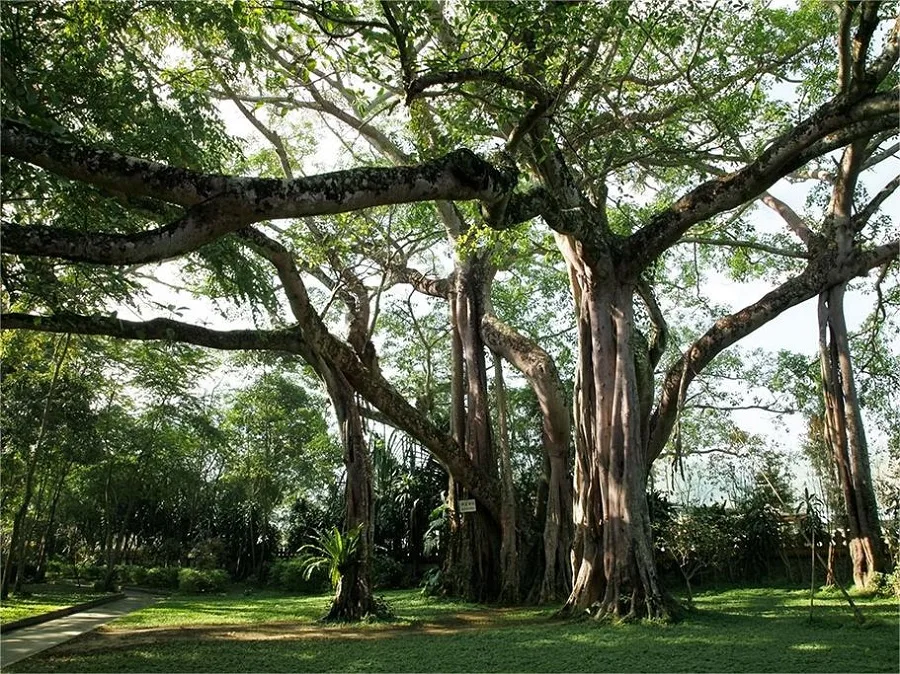
Established in 1996, Ficus Grove spans an area of 20 acres within the Xishuangbanna Tropical Botanical Garden. It serves as a sanctuary for approximately 150 species of plants belonging to the Ficus genus. Among these, the towering Ficus altissima stands out as a keystone species in the tropical rainforest ecosystem. With its expansive crown and robust branches, it provides diverse ecological niches for epiphytic, climbing, shade-loving, and shade-tolerant plants.
The abundant fruits, tender leaves, and fallen foliage of the Ficus trees serve as a continuous food source for the myriad of animals inhabiting the tropical rainforest, including birds, mammals, and insects, throughout the year. Additionally, the phenomenon of strangling roots, characteristic of many Ficus species, plays a crucial role in the natural regeneration of the rainforest by modulating species turnover. Some species, such as the Bodhi tree, hold cultural significance for local ethnic groups, embodying unique traditions and beliefs associated with sacred and auspicious trees.
Ficus trees, including the Papaya Ficus, Apple Ficus, Thick Bark Ficus, Cluster Fig, Buttress Root Ficus, and Yellow Fig, are not only vital sources of wild edible vegetables for local communities but also contribute significantly to traditional medicine practices. Within Ficus Grove, visitors can marvel at the breathtaking landscapes formed by aerial roots, towering trees enveloping ancient structures, and the intricate ecological relationships that mimic natural rainforests.
Wild Vegetable Garden

Supported by the Chinese Academy of Sciences’ technological innovation project, the Wild Vegetable Garden was developed over three years starting in 2009. Spanning approximately 150 acres, this specialized area is dedicated to the preservation and cultivation of over 400 species of wild edible and closely related plants. These plants are categorized into sections such as the wild fruit zone, wild flower zone, wild stem and leaf zone, and wild root zone, with closely related cultivated species interspersed throughout.
The Wild Vegetable Garden stands out as the world’s largest and most diverse collection of wild edible plants, showcasing the rich culinary and cultural heritage of the region. Due to minimal human interference, the garden also serves as a haven for biodiversity, attracting visitors to witness the enchanting spectacle of fireflies, particularly from April to June.
South Medicinal Plant Garden

Established in 2002 and expanded in 2012, the South Medicinal Plant Garden occupies an area of 50 acres within the Xishuangbanna Tropical Botanical Garden. It houses a diverse collection of nearly 500 species of medicinal plants. The garden serves as a dedicated resource for the preservation of medicinal plants, particularly those used in traditional medicine by various ethnic groups such as the Dai and Hani peoples. This collection not only provides valuable materials for scientific research but also serves as educational material for public outreach and awareness.
The garden is divided into distinct sections, including areas dedicated to Southern medicinal plants, ethnic medicinal plants, Chinese medicinal plants, and raw medicinal materials. The Southern medicinal plant section prominently features renowned species such as Dragon’s Blood Tree, Betel Nut, Asiatic Pennywort, Safflower, Cinnamon, Ceylon Cinnamon, Indian Mallow, Sandalwood, Indian Coral Tree, Strychnine Tree, Rauvolfia, Pterocarpus, Camphor, Tea Seed, Croton, and Coca, among others.
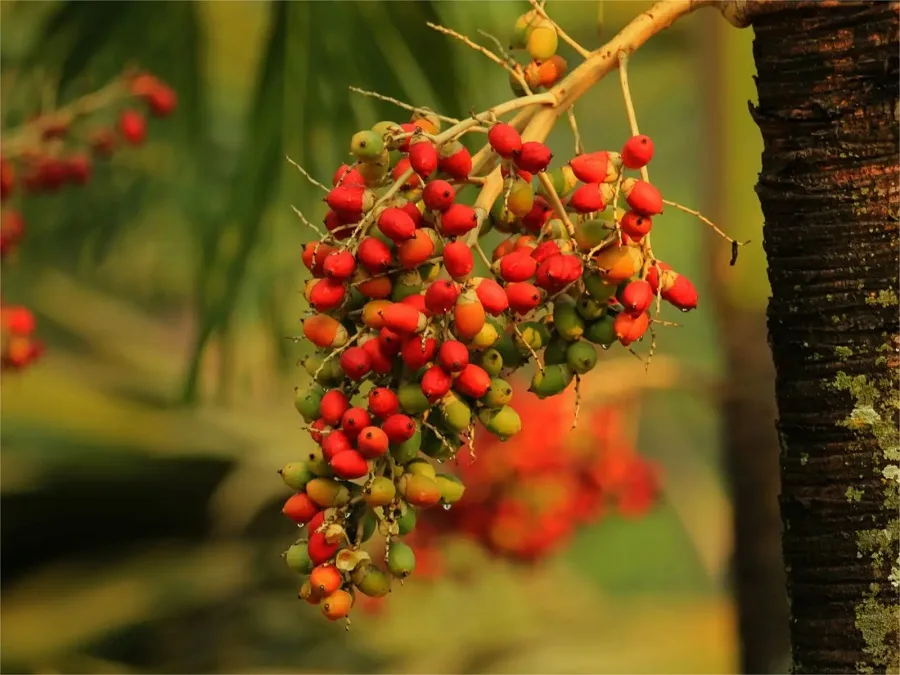
In the Chinese medicinal plant section, visitors can explore plants like Gastrodia, used for its stimulating properties, and various vital herbs including Mandrake, Aloe, Cyathula, Citrus medica, Plantain, Rhodomyrtus tomentosa, Cymbidium, and Achyranthes. The ethnic medicinal plant section showcases species commonly used by the Tai, Hani, and Jinuo ethnic groups, such as the Large-leaved Sterculia, Bottle Gourd Leaf, Shovel Leaf, and Turmeric Flower.
Moreover, the garden preserves crucial medicinal plants like Galanthus with high levels of galanthamine, Yunnan Indian Mallow for hypertension medication, Antiaris toxicaria for tumor prevention and treatment, and Strychnos for various medicinal purposes. This comprehensive collection serves as a vital repository of medicinal plant resources, ensuring the availability of important botanical materials for future research and medical advancements.
Vine Garden

Opened to the public in 2014, the Vine Garden covers approximately 100 acres and is dedicated to showcasing the diversity and beauty of climbing plants. It is divided into several thematic zones based on climbing habits and display effects, including Horticultural Ornamental Vines, Natural Ecological Vines, Population Vines, and Hanging Vines.
The garden features a wide array of ornamental vine flowers and climbing shrubs alongside thriving native wild vines, creating a vibrant and dynamic landscape. Additionally, it includes a selection of woody plants planted during the initial development of the garden. As of October 2022, the Vine Garden boasts a collection of over 700 plant species, with more than 400 species of climbing plants. Key plant families represented include Apocynaceae, Fabaceae, Verbenaceae, Schisandraceae, Rutaceae, Sapindaceae, Combretaceae, Vitaceae, Cucurbitaceae, Osmanthus, Jasminum, and Aristolochia, making it one of the most diverse and exquisite specialty gardens within the Xishuangbanna Tropical Botanical Garden.
Aquatic Plant Garden

Covering an area of 15 acres, the Aquatic Plant Garden showcases a diverse collection of tropical aquatic plants. With approximately 100 species/varieties preserved, the garden is meticulously arranged to represent various aquatic habitats, including floating-leaved plants, submerged plants, emergent plants, and marginal plants. Visitors can stroll along the winding paths by the lake and marvel at the majestic lotus leaves, vibrant water lilies, and colorful aquatic plant communities thriving along the water’s edge.
Exotic Flower and Plant Garden
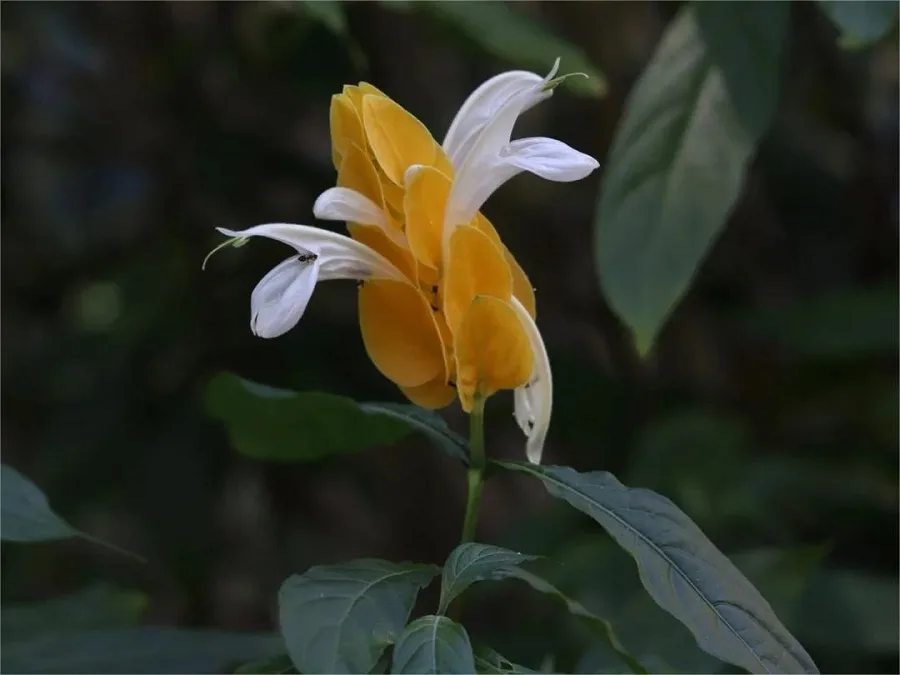
Established in 1999 and spanning 12 acres, the Exotic Flower and Plant Garden is dedicated to collecting and showcasing a wide array of tropical exotic flowers and plants. Divided into thematic zones such as Fruit Observation Zone, Herbaceous Plant Zone, Foliage Plant Zone, Sensory Plant Zone, and Stem Appreciation Plant Zone, the garden boasts an impressive collection of 254 species/varieties of exotic flowers and plants.
Visitors can encounter an extraordinary assortment of botanical wonders, including the remarkable “Flowers from Old Stems” plant, the mysterious “Mystic Fruit,” “Cacao,” “Balloon Fruit,” and “Aubergine,” as well as the fascinating “Bottle Palm,” “Bottle Orchid,” “Elephant Foot Tree,” and “Buddha Belly Tree” with their enlarged stems.

Other highlights include the unusual “Mountain Turtle” with its swollen roots/rhizomes, the gigantic “Flower of the Largest Flower,” the whimsical “Tiger’s Whiskers” and “Cat Whiskers,” the striking “Red Lotus,” “Golden Chalice,” and “Multi-petal Paper Fan,” the charming “Shrimp Plant” and “Sunflower,” and the intriguing “Red Mulberry” and “Agave.”
Moreover, the garden features sensitive plants like the “Dancing Grass,” “Sensitive Plant,” and “Clock Flower,” as well as lightweight wood specimens such as the “Balsa Tree” and protected national treasures like the “Fire Tree Hemp.” With its diverse and captivating collection, the Exotic Flower and Plant Garden has become a must-visit destination for tourists, playing a crucial role in promoting botanical and ecological knowledge among the public.
Shade Plant Garden
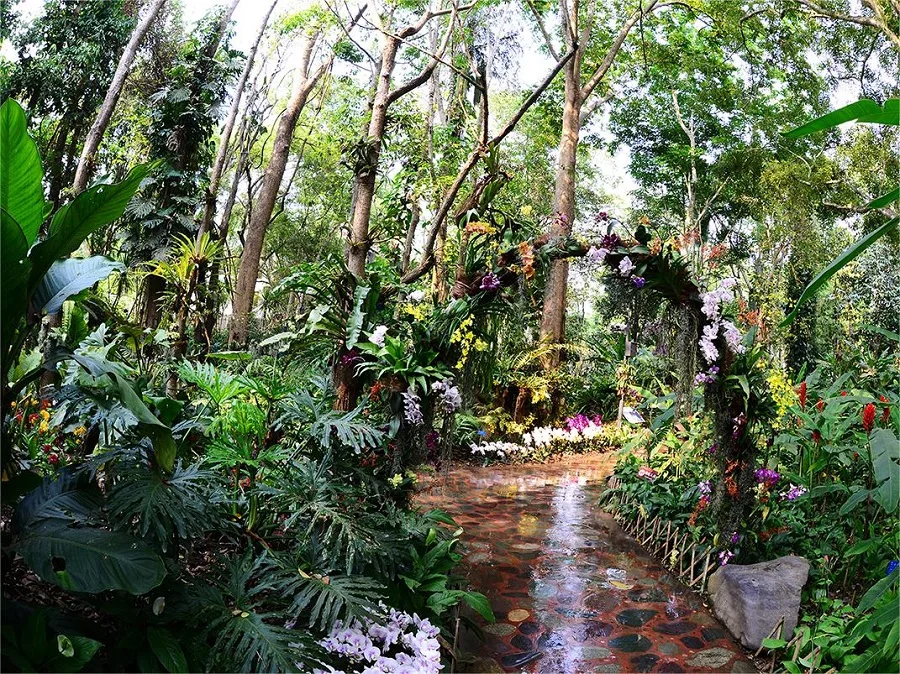
Established in 2002 across 15 acres, the Shade Plant Garden is dedicated to collecting and showcasing a diverse array of foliage, flowering, terrestrial, and epiphytic plants. With approximately 600 species/varieties preserved, the garden features prominent taxa such as tropical orchids, epiphytes (including bromeliads and ferns), ginger plants, arums, and gesneriads. Visitors can marvel at unique specimens like staghorn ferns, bird’s nest ferns, and basket ferns, alongside a wide variety of shade-loving plants sourced from tropical rainforests worldwide.
The garden serves as a platform for educating the public about the diversity of tropical shade plants and their habitats. By creating artificial communities that mimic the structure of tropical rainforests using landscaping techniques, visitors can experience the vibrant beauty of shade-loving plants in a condensed setting. The Shade Plant Garden also provides an ideal research environment for botanists, ecologists, and horticulturists both within and outside the garden, while also offering inspiration for artists and painters seeking natural subjects.
Palm Garden

Established in 1976 and expanded over the years, the Palm Garden spans approximately 140 acres and boasts a stunning collection of palm species from around the world. With over 400 species preserved, it is renowned for its scenic beauty and tropical ambiance. The garden is home to nationally protected species such as the Chinese fan palm, dwarf Chinese fan palm, Hainan dwarf fan palm, and Chinese mountain fan palm, as well as endemic Chinese species like the Euryale ferox palm.
Additionally, the Palm Garden houses economically important palm species such as the snake fruit palm, one of the four major economic palms, and potential development prospects like the blue-gray rattan and slender rattan, introduced from the Philippines. A special area within the garden is dedicated to climbing palms, covering 30 acres and featuring 35 species from various genera. Noteworthy specimens include the Yunnan rattan palm, multi-flowered white rattan palm, small rattan palm, and southern Yunnan rattan palm.
Visitors can leisurely stroll along winding paths, pause on picturesque bridges, or relax in pavilions while enjoying panoramic views of the garden. The South Sun Pavilion offers a particularly stunning vantage point, allowing visitors to admire the lush palm landscapes and wetland scenery.
Garden of a Hundred Flowers
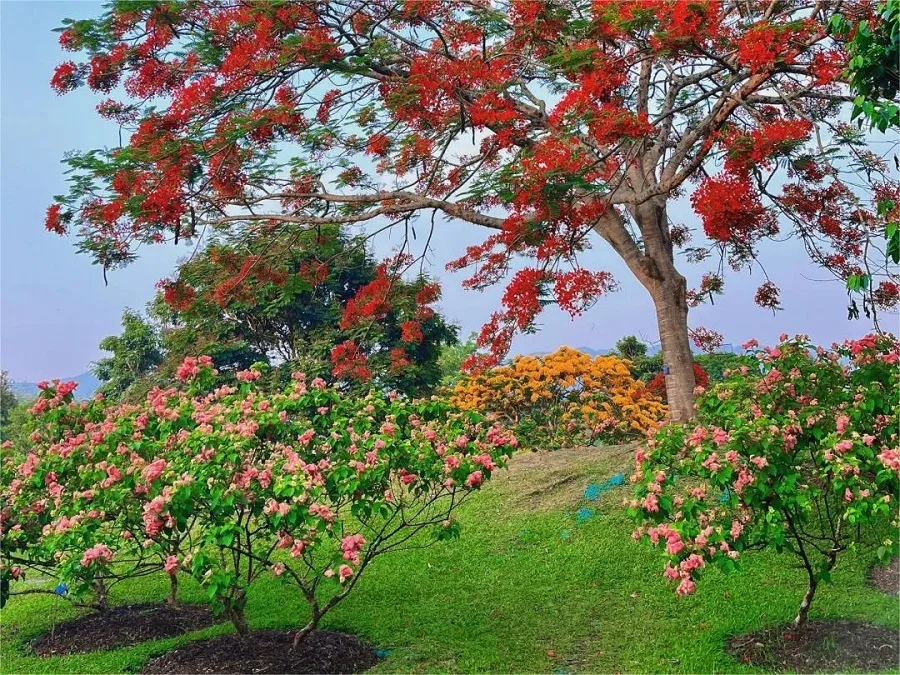
The Garden of a Hundred Flowers serves as the flagship attraction of the Xishuangbanna Botanical Garden, spanning an impressive 353 acres. It showcases a rich collection of tropical flowering plants, currently numbering 645 species/varieties. The garden’s landscape design incorporates various techniques such as solitary planting, mass planting of pure forests, concentrated collections of multiple varieties of the same species, specialized preservation of specific taxa, and displays of climbing and aquatic flowering plants. Carefully integrated with the surrounding terrain and water features, the garden creates diverse viewing spaces, evoking scenes of “flowers scattered by celestial maidens,” “dense layers of colors,” “vibrant hues,” and “blooms and blossoms.”

Utilizing a plethora of flowering plants, the Garden of a Hundred Flowers delves into the connections between flowers and human life, beliefs, and emotions. It also showcases legendary stories and literary works inspired by flowers throughout history, presented through couplets, calligraphy, paintings, plaques, and other art forms within the garden, thus highlighting the scientific and cultural significance of flowering plants. Enveloped by the morning mist of distant mountains, encircled by the flowing waters of the Luosuo River, and adorned with fluttering butterflies and wild birds, the garden offers an ever-changing spectacle of blossoms, providing visitors with a tangible experience of the magical allure of the tropical paradise.
Arboretum

Established in 1959 and occupying an area of 76.32 acres, the Arboretum is a sanctuary of diverse tree species from both domestic and international origins. With thousands of species preserved, visitors can encounter a fascinating array of trees, including the flame tree from tropical Africa, ylang-ylang tree used in perfume production, sausage tree bearing fruit resembling sausages, dancing vine snake vine, giant fruit tree cucumber tree, majestic rain tree with a sprawling canopy, globally renowned macadamia and cashew trees, as well as protected species such as the thousand-fruit olive, skyward tree, and four-numbered tree.
After decades of cultivation and natural regeneration, the Arboretum has flourished into a verdant oasis, with lush tree canopies forming a serene forest landscape. The interplay between towering trees and a diverse array of flowering and fruiting plants beneath them creates a harmonious and picturesque garden scene. As visitors wander through the Arboretum, they are immersed in a world of botanical wonders, where every tree tells a story of resilience, adaptation, and natural beauty.








I left home around 4 AM to catch my flight and arrived after 1 PM. I had lunch and took a break, then waited for the sun to ease up a bit. I entered the park around 4 PM and left before 7 PM. I spent more than two hours wandering around by myself and managed to capture many adorable little birds.
The Xishuangbanna Tropical Botanical Garden is a place I could visit countless times. Every corner is great for taking photos; it feels like stepping into a fairyland.
We went to the Botanical Garden specifically to see the Victoria lotus, but ended up seeing nothing but a single leaf and a pond of mud! We were extremely disappointed.
If you have plenty of time, you can explore the East Garden and the West Garden. However, if you’re short on time, focus on the West Garden. The East Garden is best experienced on foot; it can be quite exhausting, and you might find yourself questioning life if you overdo it. The West Garden can be fully enjoyed in half a day. If you’re with children, it’s definitely worth buying a sightseeing car because the area is quite large. In… Read more »
The temperature difference was really significant! In the morning, it was chilly enough that I needed a sun-protective jacket, but by noon when we reached the scenic area, the owner of the restaurant was wearing a down jacket or a thicker coat. When we first arrived, there was no sun at all, just clouds. However, right after we finished lunch around noon, the sun came out! By around one o’clock when we reached the first attraction, it started to warm… Read more »
It takes about an hour to travel from Gaozhuang to Xishuangbanna Tropical Botanical Garden. The garden is divided into two sections, east and west. I highly recommend taking the sightseeing bus, as it’s quite large. We arrived fairly late, so we could only visit the west section. Even just taking a photo with any tree by the roadside turned out really great!
The West District has many attractions and a lot of visitors. The tour guide uses a loudspeaker to explain, and the noise sounds quite annoying to me. I decided to wander along a small path and spent some time walking in the Fruit Garden, which turned out to be very peaceful.
However, the garden is too large, so I still had to take an electric cart.
I really do not recommend visiting the botanical garden if it’s not the blooming season. If you’re not interested in plants, I wouldn’t recommend it either.
I was filled with excitement to visit the Botanical Garden to sit on the giant water lily. After losing weight down to 98 pounds, I was a bit thrilled. But it turns out there’s a weight limit of 30 kg today. I wonder if the giant water lily has already been damaged from too many visitors, leaving only the smaller ones available.